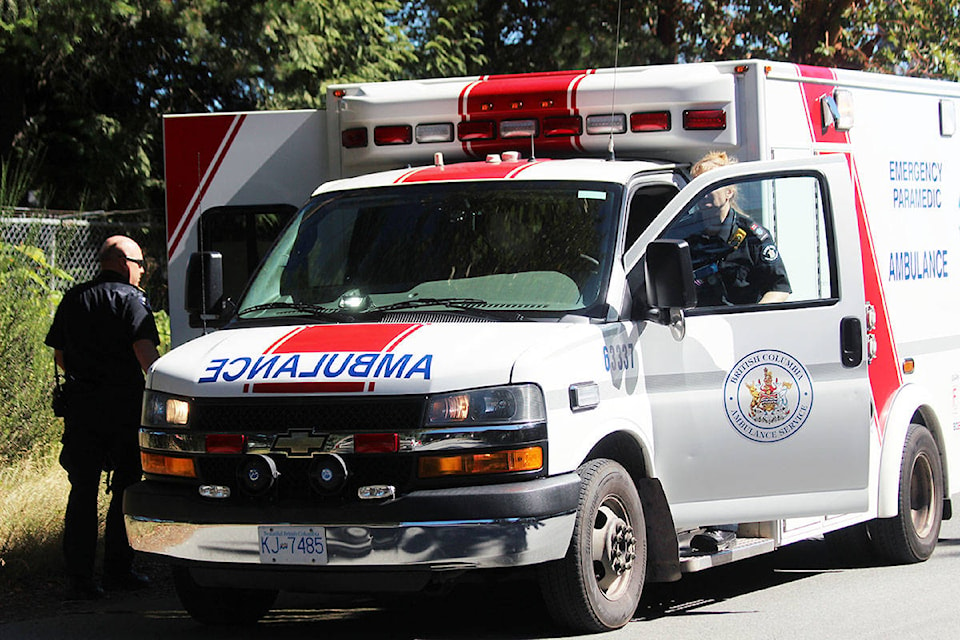When people call 911, they expect that whatever lifesaving services are required arrive quickly and efficiently.
However that capacity for service can be diminished on the busiest of days, as the Campbell River fire department saw last week.
In B.C., emergency services like ambulance and fire are run by organizations with different jurisdictions and scope. Fire departments are primarily run at the local level, where BC Ambulance is run through the provincial BC Emergency Health Services (BCEHS). These organizations all work together, but with differing levels of involvement.
For example, on Nov. 29, Campbell River fire chief Thomas Doherty told the Mirror that “We were on the one medical call, which was a cardiac arrest, then we had a second medical call that we had to send another crew to because ambulance was delayed responding from Cumberland.”
RELATED: Campbell River fire crews kept busy on Saturday
However, BCEHS says that there is no issue with the levels of service, and that the local stations are fully staffed and ready to respond. The fleet was actually increased on Nov. 1 with a new ambulance.
The station in Campbell River has 43 staff members, and unlike fire departments, it is not bound to a geographical area. The region consisting of Campbell River, Courtenay-Cumberland and Comox has nine ambulances, four of which are based out of the Campbell River station.
“BC Emergency Health Services is a provincial service allowing us to share resources across regions. If paramedics are available in Cumberland for a medical call, they may be called to Campbell River to cross-cover. When paramedic crews are not available, or out of their service area, BCEHS implements a system called ‘cross-covering’ whereby other crews in the region cover for that area,” explained BCEHS communications officer Shannon Miller in an emailed statement. “We place our resources where they are needed most. In remote and rural areas of B.C., paramedics travel great distances to respond to our patients and transport them to hospital.”
Campbell River Fire is not notified of every medical call that comes in. BCEHS calls are classified by their severity using a colour-coded system. Under this clinical response model, fire first responders are notified to provide basic life saving interventions until paramedics arrive for the three most serious kinds of calls, ranging from immediately life threatening calls like cardiac arrest to urgent/potentially serious, but not immediately life threatening calls like abdominal pain. This was implemented in 2018.
That was adjusted in April to ensure the safety of firefighters in the COVID-19 pandemic, but those restrictions were reduced in September because in rural communities it can take longer for paramedics to reach patients.
On average there have been 625 medical emergency calls per month in 2020, and around 6,900 so far in the year.
In 2019, Campbell River Fire was only notified of about 35 per cent of the total call volume. In November 2020, that number was at 29 per cent, according to BCEHS.
Miller said “paramedics are ready and able to respond to those needing medical emergency care.”
“As of Nov. 1 we had an additional ambulance operating out of Station 108, fully staffed from 7 a.m. to 7 p.m., seven days a week,” her statement read. “There is also an additional ambulance operating in Courtenay to help in the region.”
More B.C. ambulance service needed in the North: Hospital chief of staff
marc.kitteringham@campbellrivermirror.com
Like us on Facebook and follow us on Twitter
